Last Chance to Catch NYC's Holiday Notalgia Train
We met the voices of the NYC subway on our nostalgia ride this weekend!


The first Macy’s Thanksgiving Day Parade was originally intended to be a Christmas Parade started by European immigrants to show off their newfound American pride. Today, the Macy’s Thanksgiving Day Parade is a New York tradition that is watched by over 50 million Americans all over the country. Whether you’re one of the millions lining the parade route in New York City or just tuning in from your kitchen, chances are you’re waiting to see what giant Macy’s Thanksgiving Day Parade balloons are making an appearance this year.
With over 170 character balloons throughout the parade’s history, it’s these flying marvels of artistry and engineering that have made Macy’s the second biggest consumer of helium in America under the United States government.
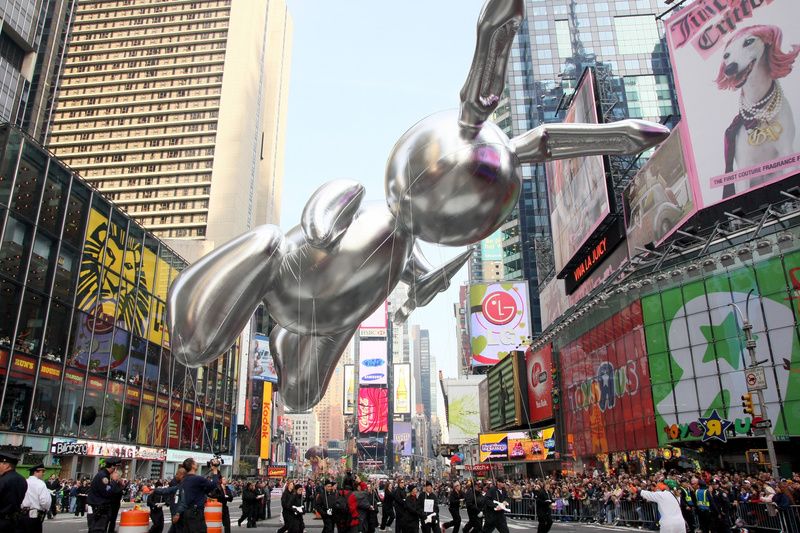
The Macy’s Thanksgiving Day Parade features three balloon classes. The Novelty Class is the oldest class and contains smaller balloons managed by anywhere from one to 30 handlers. There is also a subclass of Novelty Balloons called Ballooncicles, where balloon handlers ride bikes with the balloons attached to them. The smallest of the novelty balloons are designed to be worn over the heads of their handlers.
Full-Size Balloon Class are the balloons we all know and love. Today, these balloons are handled by about 90 people and are usually licensed cartoon, video game, or comic book characters. The Blue Sky Class is the newest of the classes introduced in 2005 and conceptualized to take works of contemporary art and bring them to life as balloons. Examples of this class include Jeff Koon’s “Rabbit,” Keith Haring‘s “Figure with Heart,” and Takashi Murakami’s “Kaikai and Kiki.”
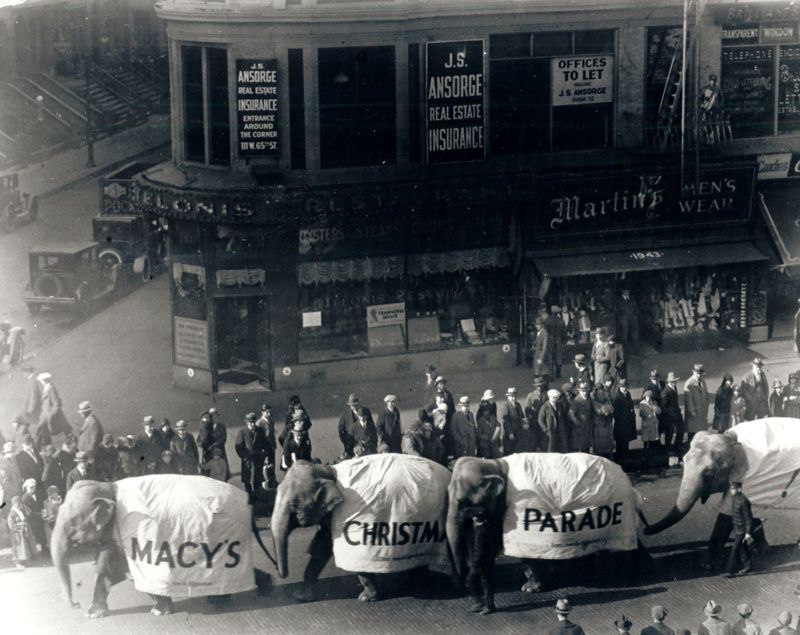
The first three Macy’s parades didn’t use balloons but instead live animals borrowed from the Central Park Zoo. Paradegoers were treated to the sight of elephants, camels, bears, monkeys, and donkeys making their way down city streets, mixed in with clowns, musicians, and traditional parade floats.
There were a few problems with using animals. First, the original parade route from 145 Street down to Herald Square was over six miles long, and the animals would become hard to handle toward the end. Second, little children were scared by the animals growling or shrieking as they passed by. Third, live animals were hard to see as parade crowds steadily increased year by year. The solution presented itself in 1927 when Macy’s hired German Puppeteer Tony Sarg to develop tethered balloon floats designed to be both wide and high enough for large crowds to see from any vantage point. Macy’s Thanksgiving Day parade balloons have been a beloved tradition ever since!

Although not a popular cartoon character today, Felix the Cat was Macy’s first balloon, designed by Tony Sarg in 1927. Felix was a cartoon character popular in the silent film era whose popularity waned with the introduction of talkies and a certain mouse created by Walt Disney.
The first Felix balloon did not yet use helium to stay afloat; handlers had to guide the balloon with sticks, which helped to keep him from falling to the ground. The first Felix helium balloon was introduced in 1931, but as in film, the balloon’s spotlight was quickly eclipsed by the introduction of the first Mickey Mouse balloon in 1934 designed by Walt Disney himself.
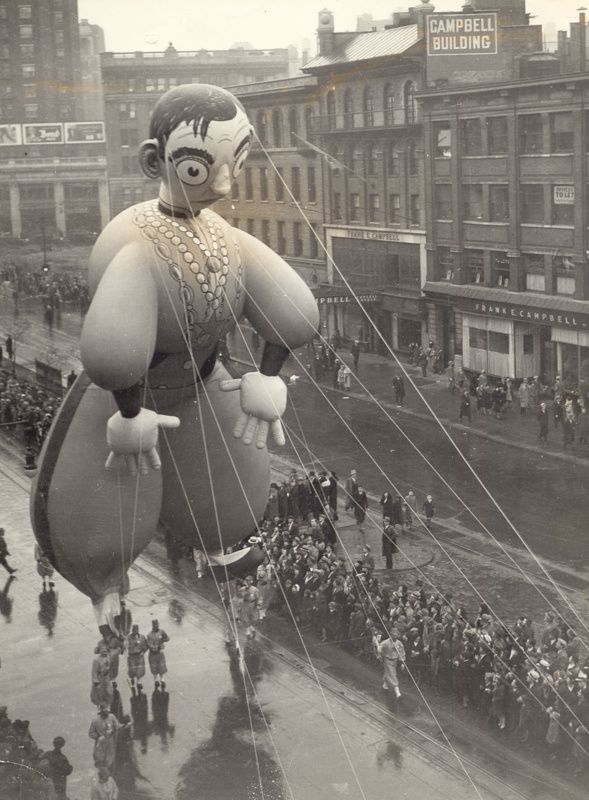
Although virtually unknown to younger generations, Eddie Cantor was a radio star, singer, dancer, comedian, songwriter and screen actor. He’s probably most famous for his rendition of the song “Makin’ Whoopie” and for writing “Merrily We Roll Along,” which was the theme to the Warner Brother’s Merry Melodies cartoons. He was also one of the Feltman waiters down on Coney Island who convinced Nathan Handwerker to start his legendary hot dog stand. So we can thank him for Nathan’s Famous.
Eddie Cantor was also the only full-sized novelty balloon to be made in the likeness of a real person. The Marx Brothers had a novelty balloon float, but it was nowhere near as large as the Eddie Cantor balloon featured in the 1934 parade. As the AV Club puts it, the Cantor balloon had “a banjo-eyed” and “ghoulish visage” which was sure to scare kids, not delight them.
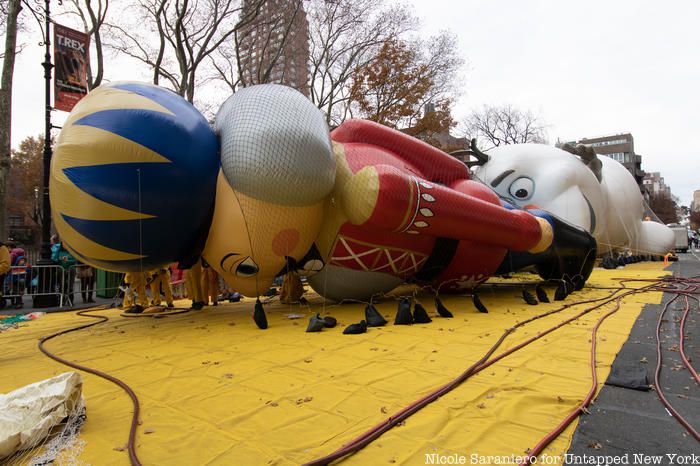
When balloons first came onto the scene, they were released into the air after the parade was over. What Macy’s originally intended to be a bit of fun became an immediate problem.
As the first 1927 Felix balloon floated away, it was snagged by power lines and caught fire, spewing burning rubber into the air. The next year, when the balloons reached a certain height, they burst. Sarg’s solution was to put safety valves on them so they could float for days. Address labels were also sewn into the balloons so people could mail them back to Macy’s for a $100 gift certificate. Allegedly two tug boats also ripped a balloon apart vying for the prize after it landed in the East River. Finally, the practice was discontinued in 1932 after a balloon was caught in the prop of a plane as its pilot was trying to catch it.
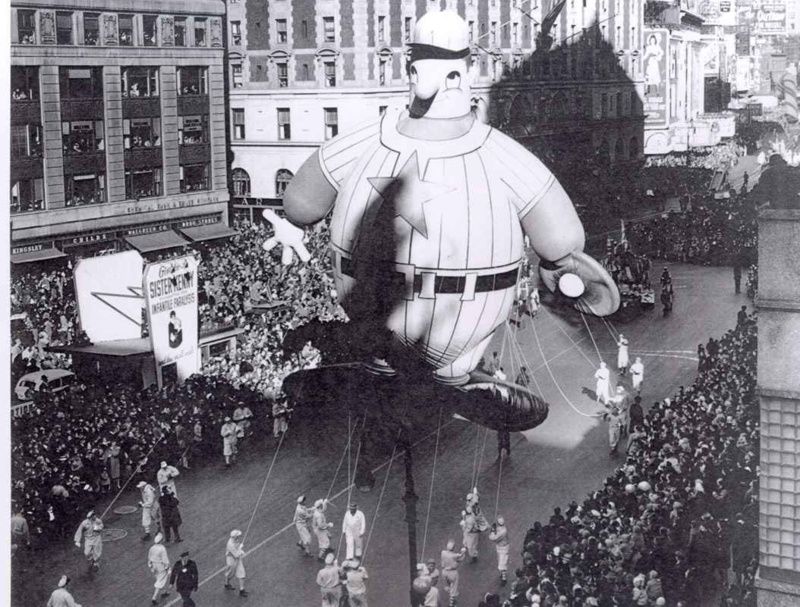
In the past, parade balloons have suffered from identity crises. For example, the first Superman launched in 1940 showed up in 1941 as the Footballer Player. But it’s poor Bobo the Hobo who just couldn’t figure out what he wanted to be in life.
Bobo was introduced in 1945, then returned in 1946 as the Baseball Player, who then came onto the scene as the Police Officer in 1947, who switched professions and showed up as the Fireman in 1948. It’s that Fireman balloon that became the inspiration for the reboot of Harold the Fireman brought back to the parade in 2011. Even our pal Snoopy went from being Millennium Snoopy in 1999 to 75th Parade Snoopy in 2001.

The 1980 Superman float was the third incarnation of the iconic superhero. The first was launched in 1940 and the second in 1966. The 1980 version was the 92nd balloon and one of the largest balloons ever to fly in the parade. The “Man of Steel” stretched his arms overhead in mid-flight with a flowing cape flying behind him. The balloon was 104 feet in length, 35 feet wide, and weighed 550 pounds when inflated with the 12,000 cubic feet of helium required for him to take flight.
Superman was also the last Macy’s Thanksgiving Day Parade balloon to be made by the Goodyear Tire Company. Since the early days of Sarg’s balloons, Goodyear and Macy’s had an exclusive contract with one another, which terminated in 1980 when Macy’s Department Store went into the balloon business on its own. The Superman balloon will likely hold its title of the largest balloon in the parade due to recent safety restrictions.
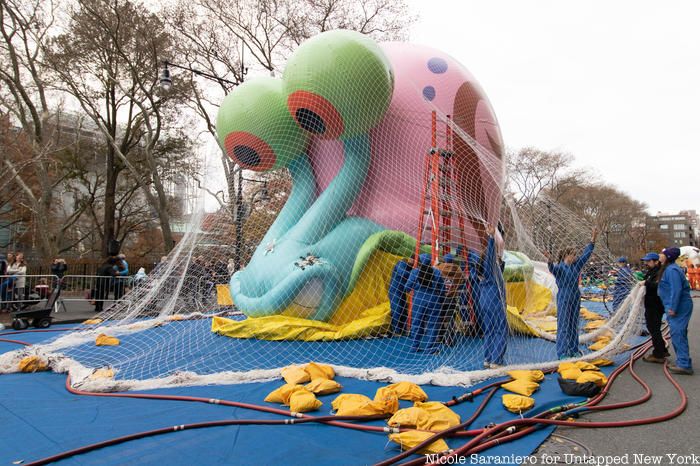
Many of Macy’s balloons are designed and constructed in a special studio in Moonachie, New Jersey. Balloons are given trial runs inside the studio, where they are checked for leaks and subjected to different tests for wind sheer at various heights. When tested, the balloon is filled with air, not helium, and is expected to float for at least six hours.
Once they’ve been given the OK, they are packed into boxes no more than 12 and half feet tall and 8 feet wide so they could fit through the Lincoln Tunnel toll booth for their commute into Manhattan. From the tunnel, they are taken to the front of the American Museum of Natural History, where they are inflated between the hours of 3 and 10 p.m. It is reported that about a million people come out to view what used to be the parade’s best-kept secret.
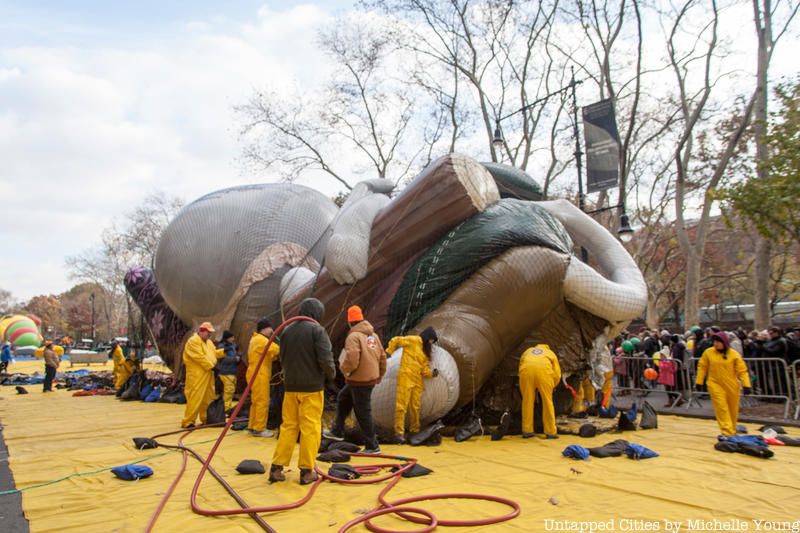
Each full-sized balloon has a team of at least 90 people making sure it navigates the parade route safely. According to Buzzfeed, each balloon has a flight management team that consists of a pilot, two co-pilots, one captain, two assistant captains, and a team in charge of steering the vehicle to the balloon is attached to. Each team also wears outfits that color coordinate with their balloons.
According to Macy’s, a parade float takes approximately four months to construct, not including ideation and design. If the Parade Studio team started from scratch and built all 28 floats in the 2021 parade, it would take eight years.

Snoopy holds the record for most balloon designs (seven) and most appearances in the Thanksgiving Day Parade at over 30. There has been Aviator Snoopy (1968), Astronaut Snoopy (1969: a tribute to Apollo 11), Ice Skating Snoopy (1987), Winter Snoopy with Woodstock (1988), Millennium Snoopy (1999), 75th Parade Snoopy (2001: an altercation to Millennium Snoopy), Flying Ace Snoopy (2006) and Snoopy with Woodstock (2013).
Subscribe to our newsletter